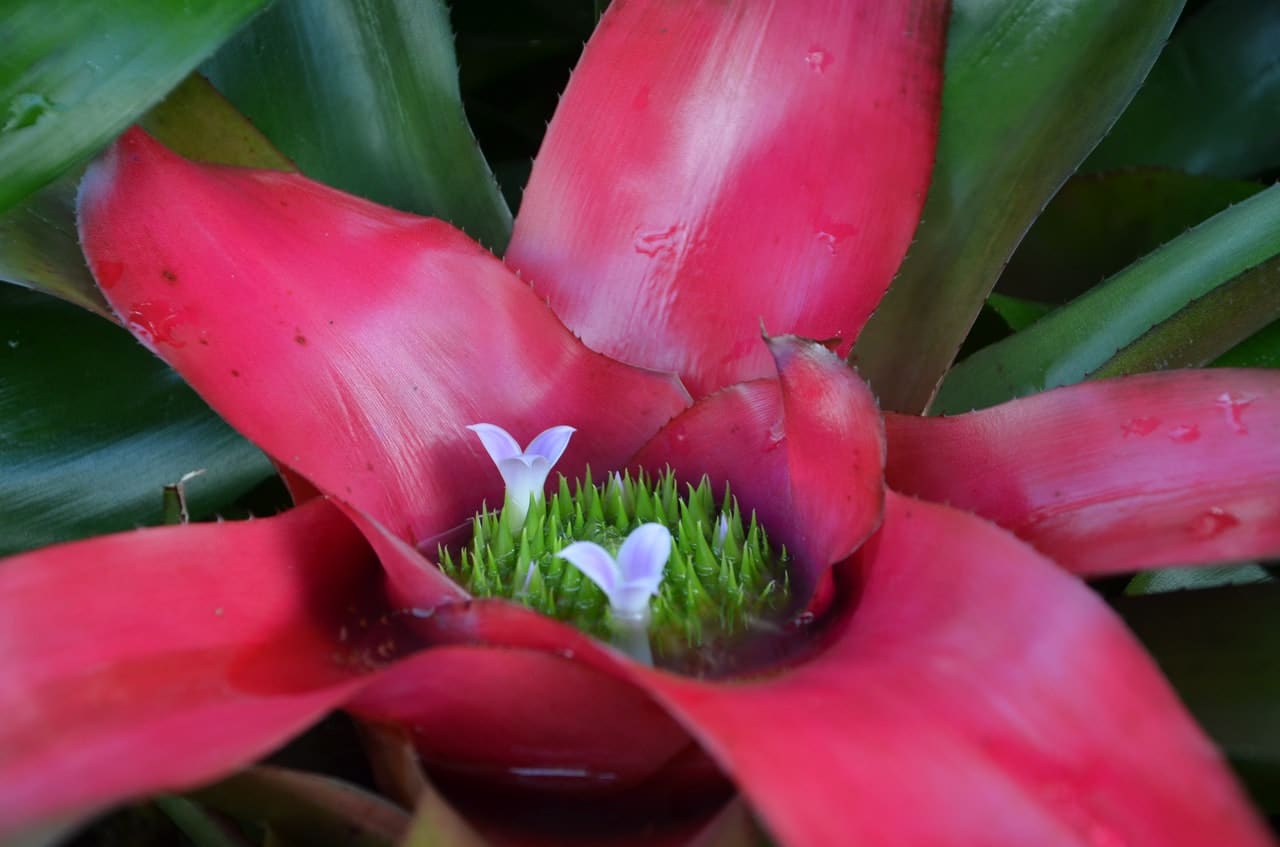
All the bromeliads They are plants that thrive in tropical and warm temperate climates. They are also widely used to decorate the interior of homes, since their leaves tend to have very bright colors; even its flowers attract a lot of attention, despite the fact that their life expectancy is quite limited.
But it is interesting to know that there are many types of bromeliad. In local nurseries, shops and markets they almost always sell them; However, there are others that are very worthwhile, like the ones we show you below.
Aechmea fasciata
La Aechmea fasciata, called mother-in-law's tongue, fasciated bromeliad or piñuela, is a native species of Brazil. Its leaves grow forming rosettes, green with a whitish upper side, and rigid.. Produces pink spikes with very small purple/bluish flowers.
Despite its tropical origin, it is a type of bromeliad that can withstand the cold if it is in a sheltered area. I myself have one in the garden, in the south of Mallorca (where the minimum temperature is -1,5º / -2ºC), in a sheltered corner, and winter far exceeds it. Of course, it must also be in semi-shade, and the land must be fertile, with good drainage.
Billbergia pyramidalis

Image - Wikimedia / JMK
Known as the torch plant or infallible plant, the Billbergia pyramidalis it is a species native to the tropical regions of northern South America and the Caribbean. It grows as a terrestrial or epiphyte; in the first case, quickly form groups. Its leaves are green, leathery, and arranged in rosettes. As for your flowers, are grouped in erect, scarlet inflorescences.
It must be kept in a partially shaded place, whether it is kept in the ground or if it is planted on the branches of other plants. The earth has to be rich in organic matter, so in case the one you have is not like that, you should mix it with compost or mulch. It tolerates cold and weak frosts down to -1ºC.
Bromeliad serra
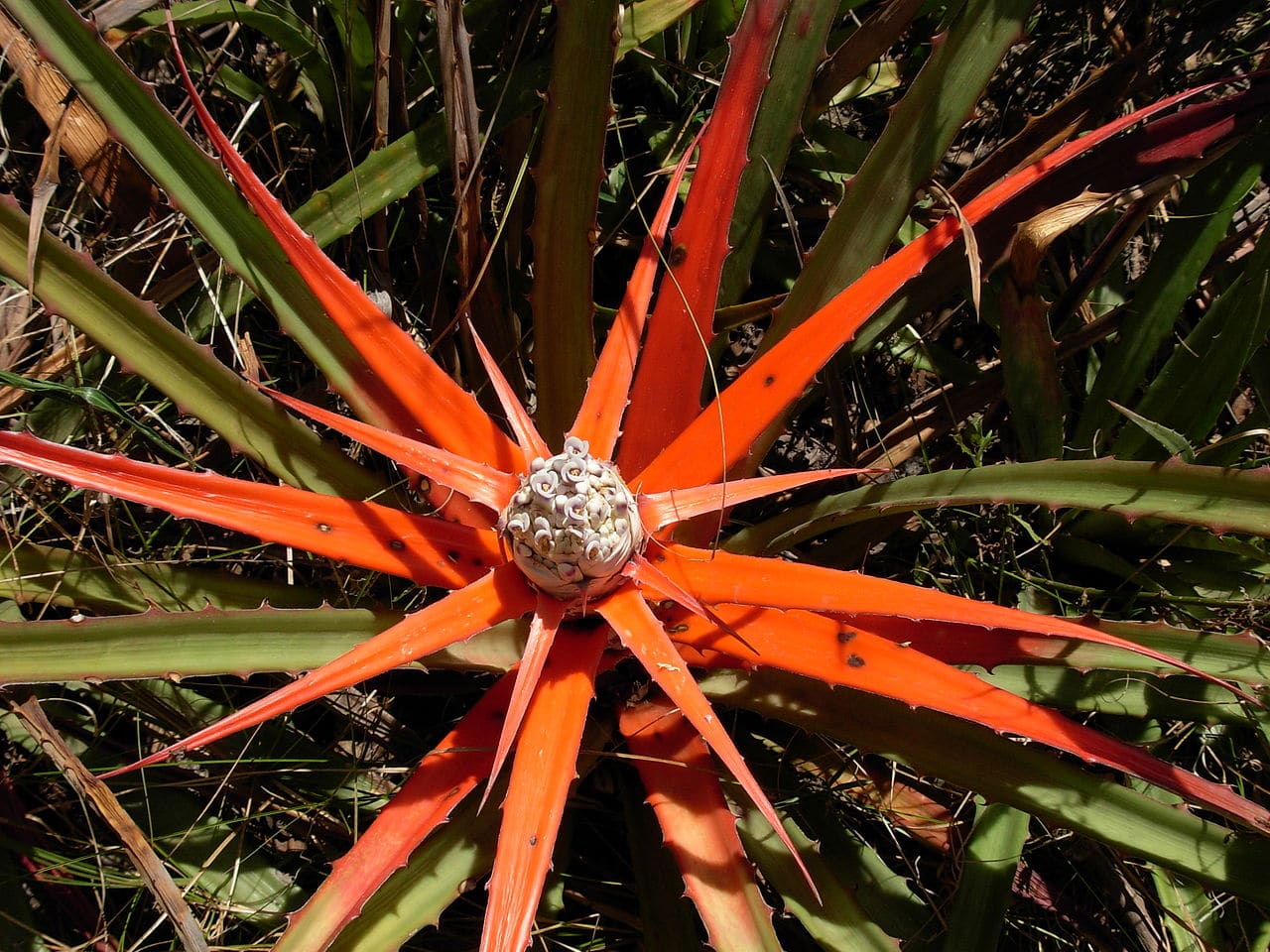
Image - Wikimedia / Graciela Klekailo
Called chaguar, the Bromeliad serra It is a terrestrial plant that lives in the semi-arid regions of the Gran Chaco, in South America. Its leaves are more or less triangular, long, leathery and with spiny green margins. The bracts are similar to the leaves, but shorter and red / orange in color. Small light-colored flowers sprout from its center.
It is a very advisable species to grow in hot and dry climates, since it resists drought well. Also, unlike many bromeliads, she prefers to be in the sun. Nor does frost harm it, as long as they are up to -4ºC or weaker.
Guzmania lingulata
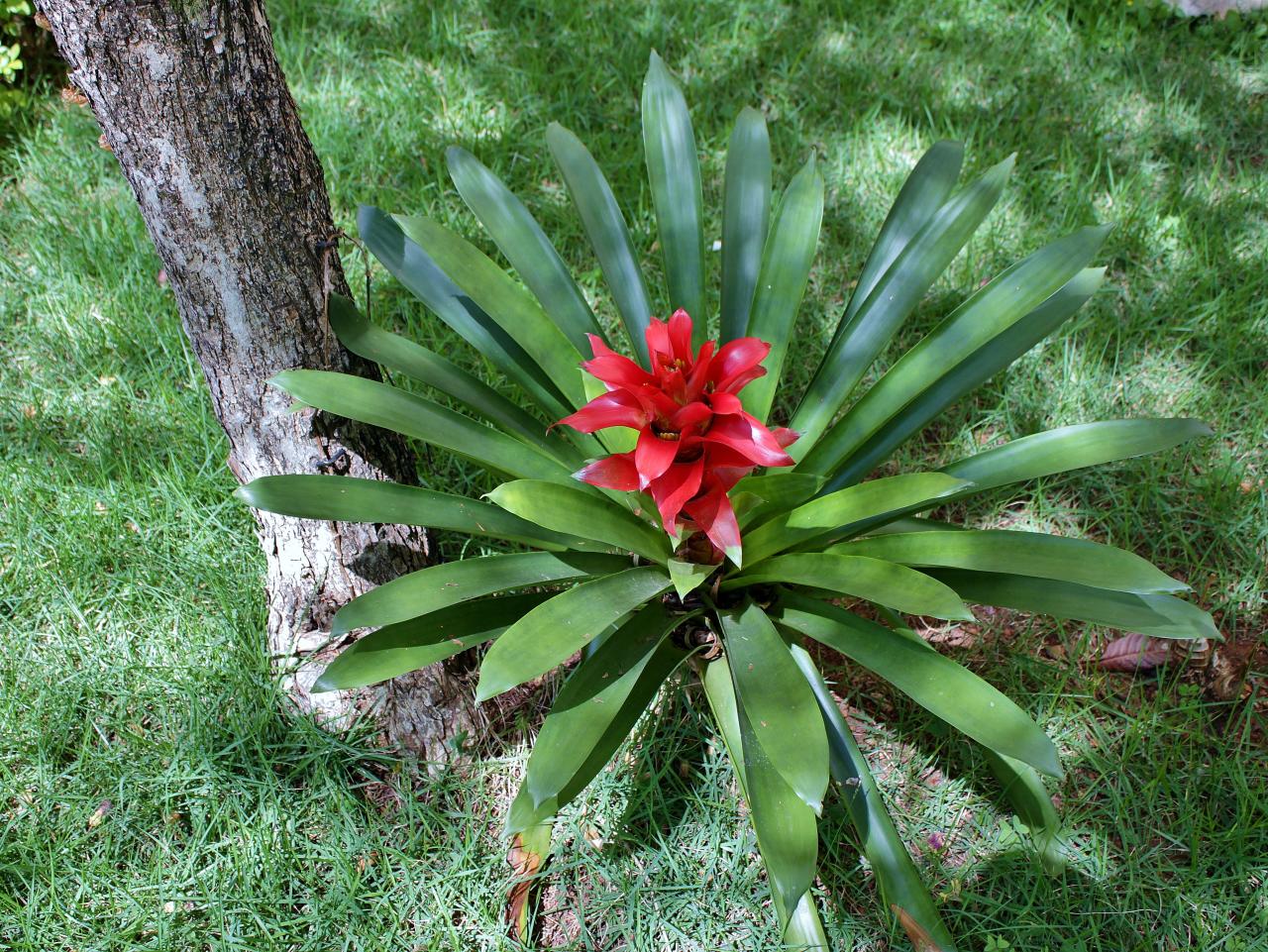
Image - Flickr / Mauricio Mercadante
Known as the frankincense flower, the Guzmania lingulata It is a bromeliad native to the tropical regions of Central and South America. It has green leaves growing in rosettes, and is between 14 and 40 centimeters long. The flowers are grouped in inflorescences about 13-17 centimeters high, and are red or orange. The total height of the plant, when it is blooming, is 30 centimeters.
It requires light, but it is necessary to protect it from direct sun, since otherwise it would burn, and be protected from frost. For the rest, it is a plant that grows both in the garden and in a pot filled with mulch or similar.
Neoregelia carolinae
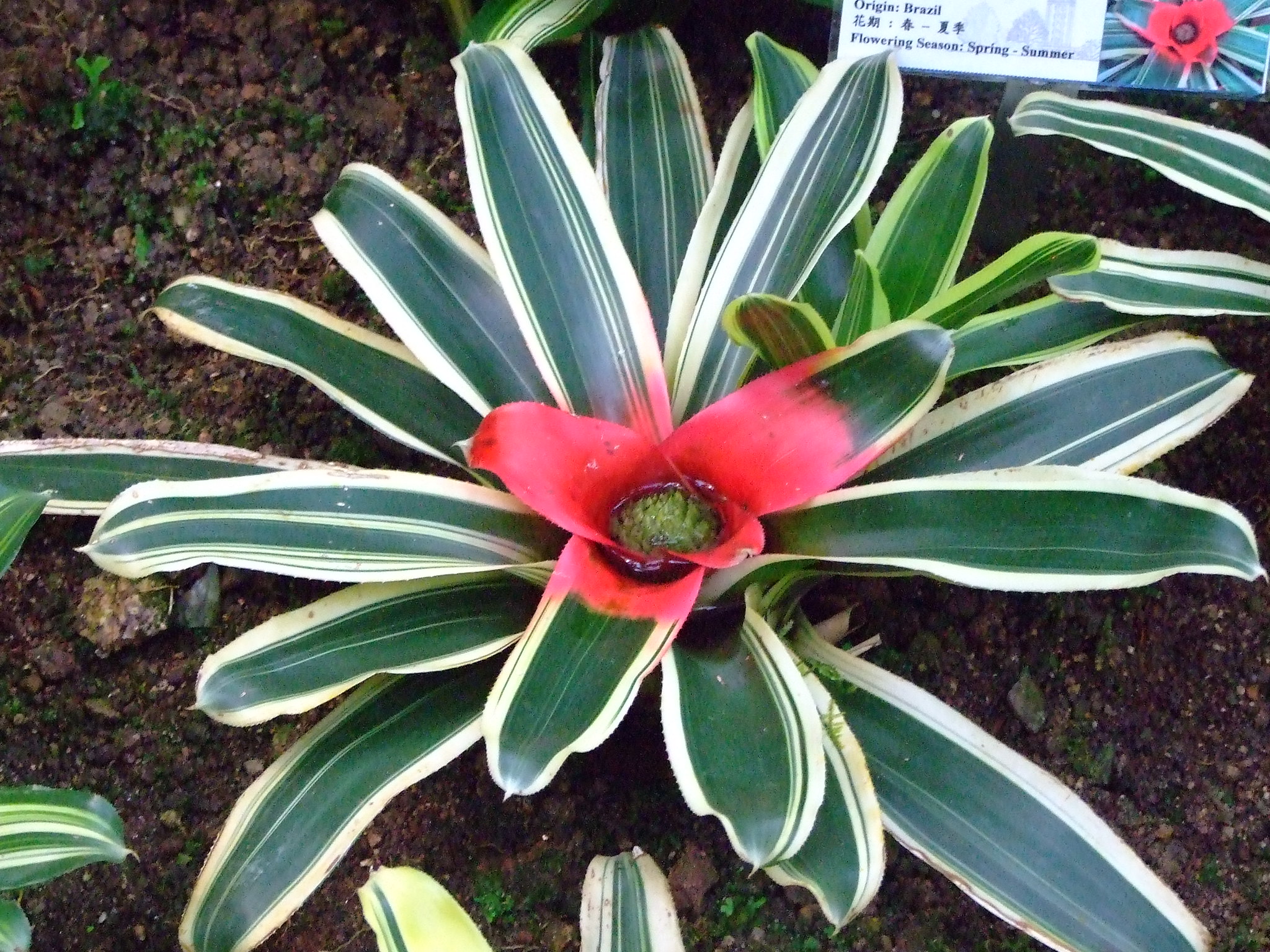
Image - Flickr / Kai Yan, Joseph Wong
It is known as neoregelia or algeria, and it is one of the most cultivated bromeliads. It is endemic to Brazil, and grows on the branches of trees. It develops by forming rosettes of tapered leaves whose height does not exceed 40 centimeters. Said leaves can be green, variegated (green with yellow margins), tricolor, ... As for their flowers, They are a globular inflorescence formed by crimson-red bracts.
In cultivation can be had in the garden, or in pots with substrates such as pine bark or pumice, always in a place protected from direct sun. It supports the cold but not the frost.
Tillandsia usneoides
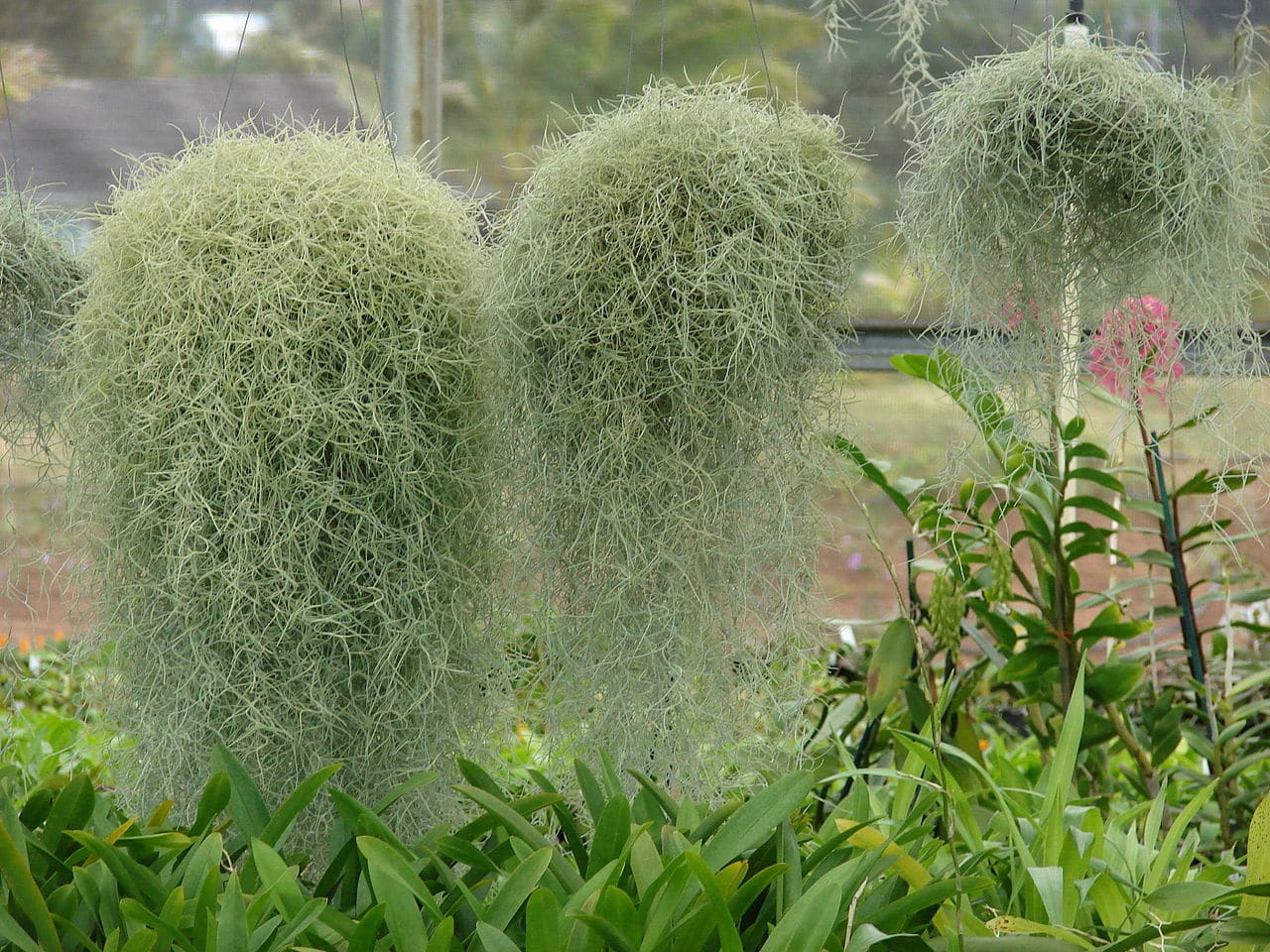
Image - Wikimedia / Forest & Kim Starr
This is another type of highly cultivated bromeliad. It is known as Spanish moss, old man's beard, or beard of úcar, and it is a plant that grows on the branches of trees, in America. Its stems are flexible, long up to almost 1 meter in length., and from them sprout very small curved leaves no more than 6 centimeters long.
It is a species that lives well in temperate climates, both in the sun and in semi-shade. It is not a parasitic plant, but because it blocks the light that comes from the sun, we recommend growing it in a pot with mineral substrate than on other plants. It resists frosts down to -18ºC.
vriesea splendens
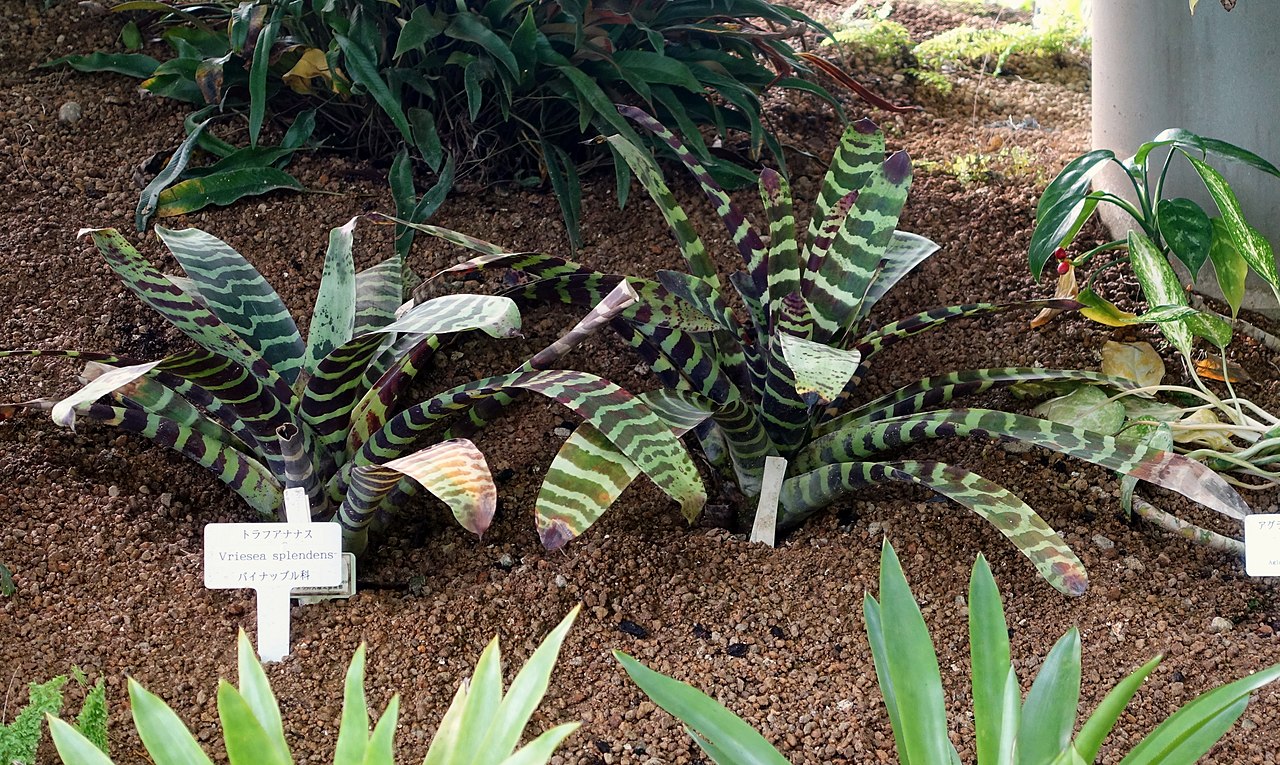
All the Vriesea are known as Indian feathers, but the V. splendens It is called a fiery swordflame sword in English) due to its inflorescence, which is a very, very striking red color. It is native to Trinidad, eastern Venezuela and the Guianas. Its leaves are rosette, and tapered, green with light green stripes, and it grows about 40 centimeters tall.
Needs light but no direct sun, as well as a soil or substrate that is rich in organic matter and that does not puddle. Likewise, it is important to keep it protected from cold and frost.
Which of these types of bromeliad did you like the most?